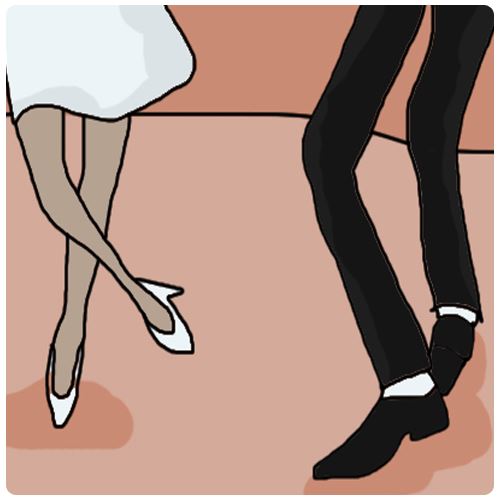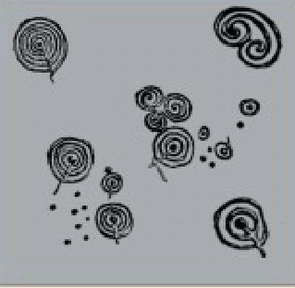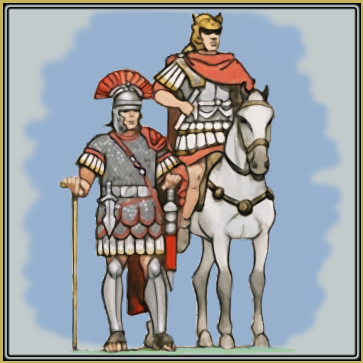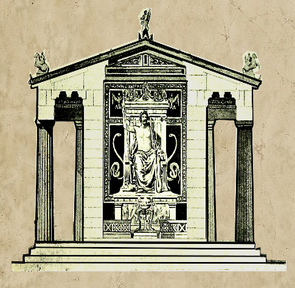
History (10)
Audience: KS4
Subject: History
Topic: US History, Law, Society, Economy, Politics
Question: Why was Prohibition felt to be necessary in The USA in 1919, and then repealed in 1933?
Author: Elizabeth Doyle
Description
This mystery explores the reasons for the introduction of Prohibition in the USA in 1919, and its eventual repeal. It is intended to support studies of the 14-16 age range – including controlled assessment – of the USA in the inter-war years, and raise themes including social reform, economic and political pressure and the question of Federal Government as opposed to State legislation and local practice and circumstances for the more able student.
It is important that students understand why two such opposing arguments relating to the question of the legality of alcohol could be so compelling to their respective supporters, and have a clear understanding of the circumstances in which this debate had taken place. Once the historical context and specific conditions in which the law was passed are understood, the more able may then be in a stronger position to relate the issues to the present day, and current debates about the legalisation of banned substances.
There are 14 slips of information in the basic level of the mystery (the app starts by default in ‘medium’, but this can be changed at any time in the settings). There are 22 slips on 'medium'; the additional slips require more able students to consider the ‘grey areas’ around the issue, i.e. the failure of the authorities to enforce the law, and the complicity of ordinary Americans who continued to consume alcohol, and ‘turn a blind eye’ to illegality. Also, the public’s fondness for alcohol could not be ignored. On the ‘hard’ setting, there are 26 slips (an extra four). The most able students should be able to link the tensions and issues raised by the attempt to stop the consumption of alcohol to other debates about the state control of illegal substances. They are also designed to raise the possibility of tax revenue for the government, and set this against the question of the health and welfare of the population.
While students complete this task, they are propelled into this important era in history. It supports their studies of this time and helps them learn about, and discuss, various themes.
Depending on level of knowledge or ability, the task can be suited to different students.
Audience: KS4/KS5
Subject: History
Topic: America, Literature, 20th Century, Racism, Industry, Media, Community
Question: Were the ‘Roaring Twenties’ a good time to be alive in America?
Author: Elizabeth Doyle
Description
This resource is intended to help students engage with the various experiences of Americans who lived during the period known as ‘The Roaring Twenties’. It is hoped that they will discover that while there was prosperity and increased opportunity for some, others missed out on some of the new opportunities. In addition, to learn that while some women experienced changes, others belonged to communities that resisted innovation, and that racial discrimination continued to be an issue.
In America, the 1920s was a time of social change and upheaval. It is important that students who are studying American History have an overview of the more significant aspects of the changes, and their effects. This mystery is intended to help students achieve such an overview, and link this to their understanding of related topics such as race, industrial relations, family life and the role of women in Twentieth Century America. Because the subject of mass media and communication is a major feature of the period, more able students may be able to trace the influence of technology and the accessibility to information, opportunity and ideas during this century. There may also be opportunities for cross-curricular discussion relating to Media Studies or the Media elements in English Language.
It could also provide a good background for those studying ‘The Great Gatsby”, as it gives key historical context for an exploration of the novel.
There are three difficulty levels to this mystery. On Easy, there are 18 slips, Medium, 24, and Hard, 28. The Grouping Stage introduction is also slightly different for each difficulty level - with the focus solely being on the most notable features in Easy, the impact of different innovations in Medium and the effects of the Roaring Twenties on various economies/experiences of different groups, in Hard.
Medium difficulty level: This set is intended to help students explore the ways that the ‘Roaring Twenties’ impacted on the different parts of America, women and Black Americans. There was a range of change and innovation at this time, and the effects of these varied across the country and in different social groups. Whether the innovations of the period were feared or embraced often depended upon the outlook and perspective of the people concerned, so there is a discussion to be had as to whether the 1920s were a positive or a negative decade for the USA.
Hard difficulty level: The more able students may be able to identify the long-term impact of the 1920s, and the legacy that was created, for example, by the emergence and popularity of mass consumerism and the dissemination of Black culture. There is also a literary legacy, epitomised by the life and work of F. Scott Fitzgerald, which is best understood when studied in the context of this remarkable period in American history.
Some suggested goals for this task, depending on ability or level of knowledge may be to:
- discover the differences in opportunities for many people in 'The Roaring Twenties'
- develop an understanding/overview of the changes during this period and their effects
- link the changes to their understanding of related topics, e.g. race, industrial relations, family, women
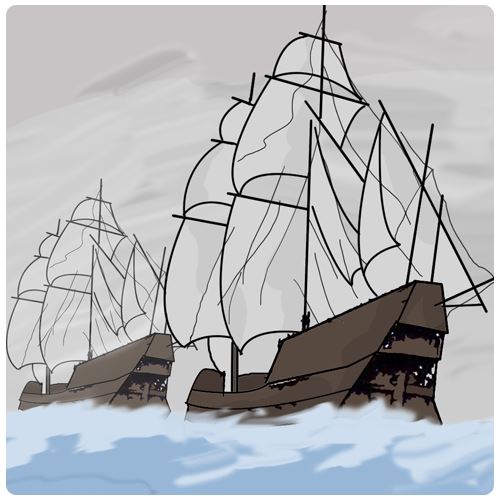
Audience: KS3
Subject: History
Topic: Spanish History, Naval Warfare, Tudors, Religion, Christianity
Question: Why did Philip II of Spain decide to launch an armada of ships to invade England, and would he be sorry he did so?
Author: Paul Lawrence
Description
The Spanish Armada is a significant event during the Tudor period, and one which sheds light upon a number of key themes that emerge during the study of ‘The Making of the UK’. These include Catholic and Protestant religion, power, warfare, international politics and questions of succession to the throne. It is also an event whose outcome could not have been predicted, but provides a good opportunity for students in Key Stage Three to consider a range of factors and evaluate the contribution each event or combination of events makes to the ultimate failure of Philip of Spain’s campaign.
While the students using the basic set are asked to identify the reasons for the launch of the Armada and its outcome, the standard set of statements are intended to assist students in the skills of evaluation, and the assessment of the importance of religious conflict as a cause of the venture. More able students could then consider how much the planning and tactics of those involved were undermined by forces beyond human control. It is hoped that this will help to develop the higher-order strategies of analysis and evaluation that will lead to success in Key Stage Four.

Audience: KS2
Subject: History / English
Topic: Group discussion and interaction, Victorian era, 19th century, inventions
Question: Should the Booth family move to Manchester?
Author: Anne de A’Echevarria
Description
Should the Booth family move to Manchester?
This mystery has been designed particularly with the History and English curriculum in mind. It can also be used to foster the development of generic higher order thinking skills.
History
The new National Curriculum 2014 demands that pupils study an aspect or theme in British history that extends their chronological knowledge beyond 1066. This mystery could be used to that end, for example, by supporting a study into why towns grew in the 19th century, or how key inventions, such as steam power, represented a significant turning point in British history for the manner in which they effected our economy and society. The mystery could also support a local history study into the effects of industrialisation and population movement (particularly for pupils living in areas effected by the textile industry).
The mystery helps pupils to address historically valid questions about change, cause, similarity and difference, and significance. It encourages pupils to construct informed responses that involve thoughtful selection and organisation of historical information.
English
The mystery could also be used to help pupils learn and understand the conventions of discussion. Relevant learning objectives might include:
- make contributions relevant to the topic and take turns in discussion;
- vary contributions to suit the activity and purpose, including exploratory and tentative comments where ideas are being collected together, and reasoned, evaluative comments as discussion moves to conclusions;
- qualify or justify what you think after listening to others' questions or accounts;
- deal politely with opposing points of view;
- use different ways to help the group move forward, including summarising the main points, reviewing what has been said, clarifying, drawing others in, reaching agreement, considering alternatives.
Thinking skills
Learning objectives relating to the generic thinking skills that the mystery aims to develop might include:
- to justify ideas with reasons.
- to form a well-structured argument.
- to speculate and draw inferences from information.
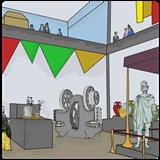
Audience: KS2
Subject: History
Topic: History, Victorians, Inventions, Great Exhibition, Engineering
Question: Why did Charles Featherstone only visit the Great Exhibition once?
Author: Gavin Johnston
Description
In this mystery a fictional character (Charles Featherstone) is introduced as someone who visited the Great Exhibition. However we know he only visited once – but why? We learn about Charles as a typical rich Victorian man, where he lived and how he lived. More importantly we learn about the Great Exhibition – what was inside, how much it cost to enter and what people thought about it. We learn that the price to gain entry changed to engage more visitors and the consequences this had.
During this mystery we find out about the important event of the Great Exhibition which was help in Victorian times to celebrate Britain as a Great Industrial nation. Children will learn the importance of emerging technology in Victorian times and how the wider population were encouraged to come and see it in action. We also learn about the changing view of the world as ordinary people found out about the wider world through seeing the artefacts and machinery on display.
Audience: KS1/2
Subject: History
Topic: War, poppy, service, history, remembrance, armistice
Question: Why did Sarah attend the Remembrance service?
Author: Lynne Flint
Description
This mystery aims to teach children about Remembrance Day and the reasons behind the services held each year. It uses facts associated with the world wars and explains some of the symbols related to remembrance and how they are used.
Upon solving this mystery, children will:
- know that Remembrance Day has its origins in events in the past which really happened.
- appreciate that Remembrance Day touches directly on some people's lives today through their personal experience of war in the past and/or now.
The task involves students learning about a fictional character called Sarah and things about her life including family, hobbies and school. There are three difficulty levels to choose from. On the 'easy' setting, there are 10 slips of information; on 'medium', there are 20 slips of information and on hard, there are 24 slips of information.
Learning outcomes
History objectives covered include learning:
- that commemorations are linked to specific events in the past which really happened.
- when World War One and Armistice Day occurred.
- why specific symbols are associated with commemorations.
- that some important events are commemorated by people in Britain and the wider world.
Subject: History
Topic: Neolithic, Bronze Age, traditions, pre-history
Question: Why did Neolithic and Bronze Age people carve cup and ring marks into rock?
Author: Gavin Johnston
Description
This is a mystery about the Neolithic and Bronze Age cup and ring marks which are found all over the world. These marks were created up to 5000 years ago and there are many suggestions as to why they were made.
During this mystery the children learn about the Neolithic and Bronze Age traditions. The children learn when the cup and ring marks were created and how they could have been made. After this the children learn about the possible significance of the shapes and how they could have been used. Children can come to their own conclusions about the mystery of the cup and ring marks.
There are three different difficulty levels on this mystery. To change the difficulty, go to the Settings menu. On 'easy' there are 15 slips, 'medium' there are 19 and 'hard' there are 24. A different set of hints on grouping and sequencing ideas are provided in each level.
Please also see the additional sub-questions suggested. These do not appear when the session is in-play, but we recommend noting them down or writing them on the board, if you think they would be useful.
This task could lead to students doing their own research on the topic and seeing if this changes their answer.
- Begin to develop an understanding of Neolithic and Bronze Age traditions
- Learn about when cup and ring marks were created
- Read about and discuss how cup and ring marks could have been made
- Learn about and debate the possible significance of cup and ring marks and why they may have been used
Audience: KS2
Subject: History, English, PSHE
Topic: Romans, Hadrian’s Wall, Empire, fort, Maximus
Question: Why did Maximus leave Hadrian’s Wall?
Author: Gavin Johnston
Description
This is a mystery about Maximus – a Roman Cavalryman who was posted at Segedunum on Hadrian’s Wall. We find out about aspects of Maximus’ life and his role on the wall.
During this mystery the children learn about the importance of Hadrian’s Wall as the border of the Northern Frontier. We learn about possible reasons as to why the Romans left and evidence about why Maximus in particular left the Wall to be garrisoned in Rome. There are many possible reasons for his departure – which do you believe to be true?
Audience: KS2
Subject: History
Topic: Ancient Greece
Question: What is Theo most proud of about Ancient Greece?
Author: Gavin Johnston
Description
This mystery points to the National Curriculum 2014 point 'Ancient Greece – a study of Greek life and achievements and their influence on the western world'.
It helps pupils understand the legacy of Ancient Greece through the fictional character of Theo. It enables pupils to understand the aspects of Theo’s life he sees as important and begin to understand how these have affected our lives today – the legacy.
The mystery includes information on Ancient Greek Olympics, the arts (theatre), Architecture, writing and democracy. Information is given out at three different levels and there are also ‘red herrings’ which give extra information about Ancient Greece but don’t add to the pupils’ knowledge when solving the mystery. Pupils have to decide which parts of his life they think are the most important.
Another suggested main question for this mystery is ‘What is the most important legacy of the Ancient Greeks?’
- To investigate and interpret the past
- To build an overview of world history
- To understand chronology
- To communicate historically
Audience: KS3
Subject: History
Topic: Exploration, Conquest, Explorers, New World, Conquistadors
Question: Why did young Spaniards like Pablo Abrantes join voyages of exploration to the New World, which led eventually to the control by Spain of most of South America?
Author: Elizabeth Doyle
Description
This resource is intended to help students investigate the conquest of the South American continent by Spain, and does so by considering the experience of one fictional character, Pablo – a Spanish sailor. Once the ‘narrative’ of the young man’s journey has been established, this focus (on the experience of one young man) could help students to imagine the various reasons why someone could be attracted to such a risky venture. This can then be used as a backdrop to the wider issue of the actions and intentions of the European nations and rulers as a whole.
As well as the ‘push’ and ‘pull’ factors which motivated the Spanish to explore, it is hoped that the students will reflect upon the ways that the conquered peoples came to embrace the settlers, and whether or not they could be deemed to have been complicit in their own fate.
These events provide an important ‘backdrop’ for studies into the various power struggles and political and religious tensions that characterise European History throughout the Fifteenth and Sixteenth Centuries. The social, racial and religious factors are also interesting, and the more able students may be able to relate these to other historical scenarios, and perhaps to more contemporary issues and areas for discussion.
This task has three difficulty levels. On 'easy' there are 20 slips, on 'medium' there are 26 slips and on hard, there are 28.
- Discuss reasons why someone like main character, Pablo, would be attracted to this venture
- Explore the wider issues of actions/intentions of European nations and rulers as a whole


